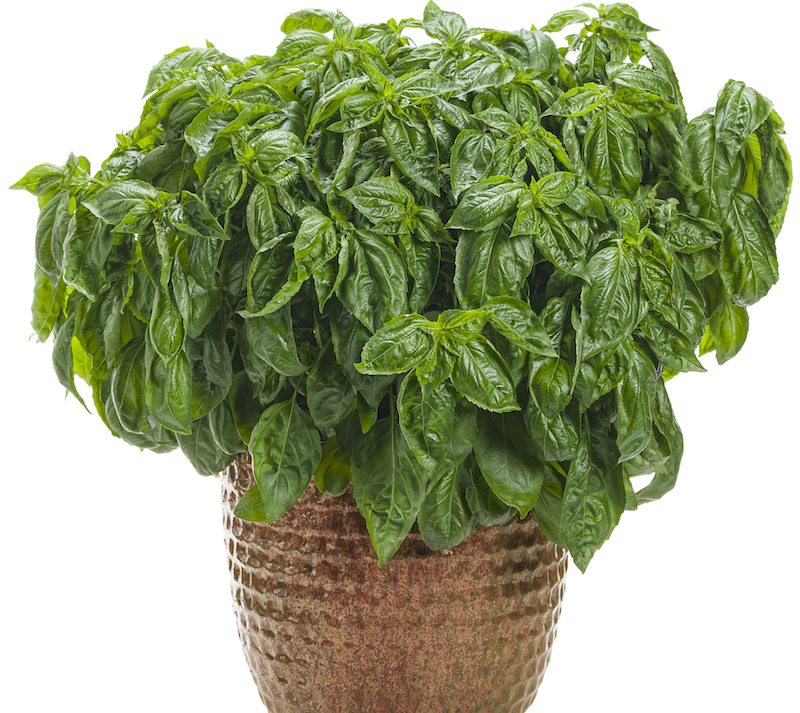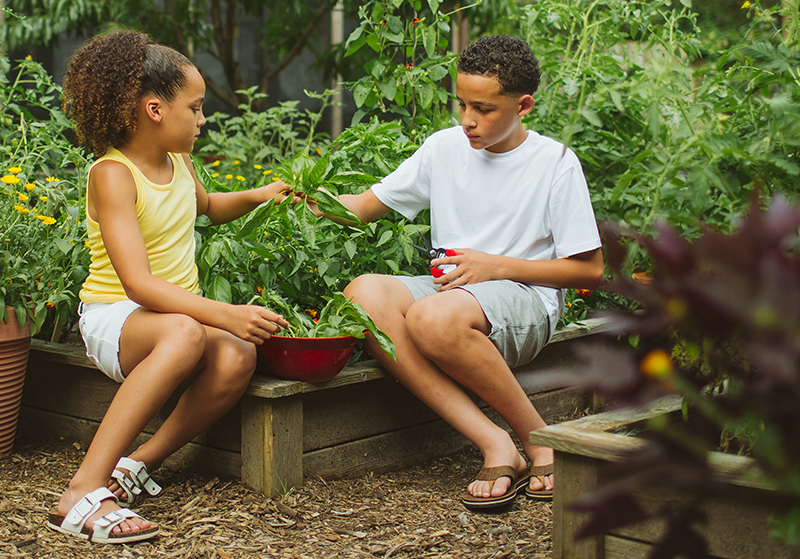Basil, a prized herb ingredient in many cuisines, has easily earned its spot in any herb garden. Growing this herb, known scientifically as Ocimum basilicum, in a garden or container means a ready supply all season long. It is fairly easy to grow, with just basic care requirements. As annuals, they will die back with the first frost, but can otherwise be dug up and brought indoors to prolong their life a bit. With good site or container selection and basic care that includes irrigation and occasional pruning and fertilization, the basil will proliferate.

Caring For Basil Plants
A few basic care techniques will help to ensure flavorful and bountiful basil harvests all season long. These warm-weather, sun-loving plants like regular moisture, so they benefit from a thin layer of mulch covering the soil in their root zone. A mulch layer also keeps leaves tidier by keeping soil from splashing up onto the leaves following rain or watering.
Diseases may occasionally bother basil plants. If basil plants had a disease issue previously in the growing site, be sure to select a cultivar that offers resistance to the disease culprit, often Fusarium wilt or bacterial leaf spot. Regular pinching or harvesting will encourage the branching that leads to more tender foliage. Remove flower buds as they appear to force the plant to channel energy to vegetative growth.
Planting Basil Plants
Basil will grow best in a site with full sunlight but can still perform well with as little as six hours of sun daily. Basil seeds are often started indoors about 4 to 6 weeks ahead of planting out. They are ready for transplant into the garden when nighttime temperatures are above 50 degrees and daytime temperatures are regularly above 70 degrees Fahrenheit. Space requirements will vary slightly depending on the cultivar, but as a general rule, plan to space multiple basils and herbs 2 feet apart.

Watering Basil Plants
During the growing season, basil prefers about an inch to an inch and a half of water weekly through rainfall and supplemental irrigation. Water plants slowly and deeply by applying a trickle of water over the root zone for several minutes. A layer of mulch of up to 3 inches over the root zone will help to conserve moisture as well as suppress weeds and keep rainwater from splashing soil up onto the leaves. Under-watered plants may develop poor root and shoot growth, leaf wilt, and a lower yield; overwatering can have the same impacts and lead to root rot.
Fertilizing Basil Plants
Fertilizer applications will ensure the basil grows vigorously and provides plenty of leafy growth for harvest. A soil test is the best way to determine if the soil pH is within the 6 to 7.5 range that basil prefers and if any amendments are warranted. Working plenty of organic matter into a site can minimize the need for supplemental fertilizer. As a baseline, however, apply a 5-10-5 or similar slow-release fertilizer at a rate of around 3 ounces per 10 feet of row or as directed on the label. Work this into the ground at the time of transplant, and sidedress plants a second time partway through the growing season.
Fertilize basil growing in containers with a water-soluble fertilizer once every week or two. Inadequate nutrients shows as reduced growth and pale green foliage, while overfertilizing negatively affects aroma and taste.
Growing Basil Plants In Pots
Basil is an excellent candidate for container growing. Bushy or compact cultivars are particularly suited for container cultivation. This method also allows the herb to be grown year-round if the container is kept indoors when frost and freeze arrive. Of course, since the plants are annuals, they will only survive for a limited time before they flower, set seed, and die. However, planting new seeds every few months will ensure fresh basil is always on hand.
Various sizes of container will work, as long as there are adequate drainage holes. Use a high-quality potting soil with plenty of organic matter, and check on the basil frequently, as plants in containers tend to dry out faster than specimens in the ground.

Harvesting Basil Plants
Harvest can begin at any point once the basil has produced several leaves. To harvest, use scissors to snip or fingers to pinch off new young leaves as needed. Alternatively, harvest whole segments of stem–this also doubles as a pruning. Always leave 4 to 6 inches of stem with 2 or 3 pairs of leaves remaining on the stem. Cut just above a pair of leaves. New growth will emerge from the node at that pair of leaves shortly. Basil leaves do not store very well, even when refrigerated, so it is a good idea to use them quickly following harvest.
 |
Author Angela Ryczkowski - Published 3-17-2023 |
